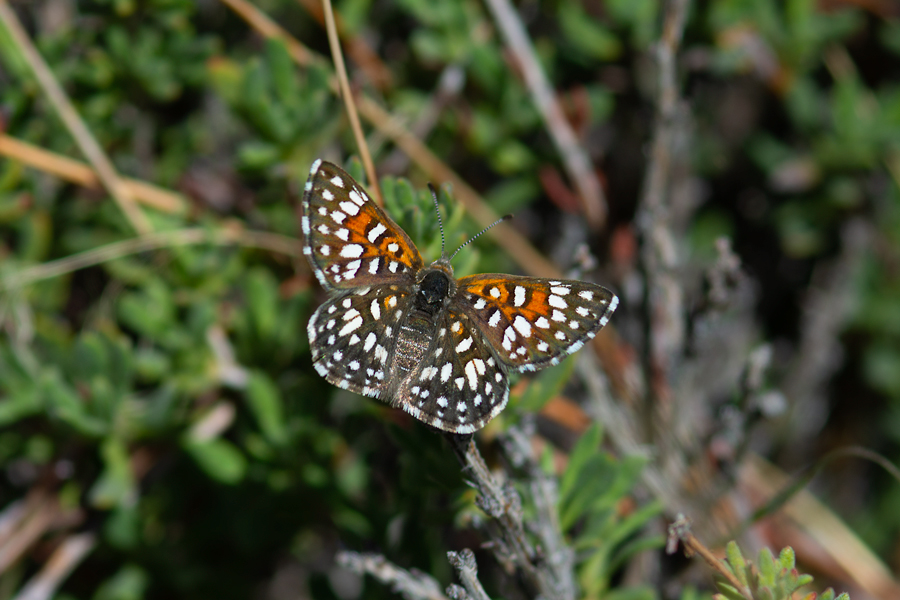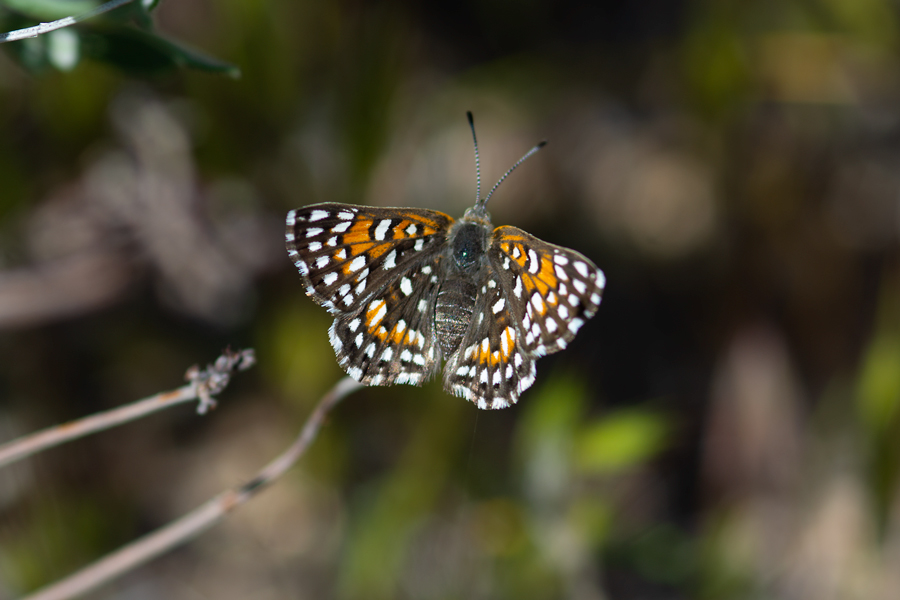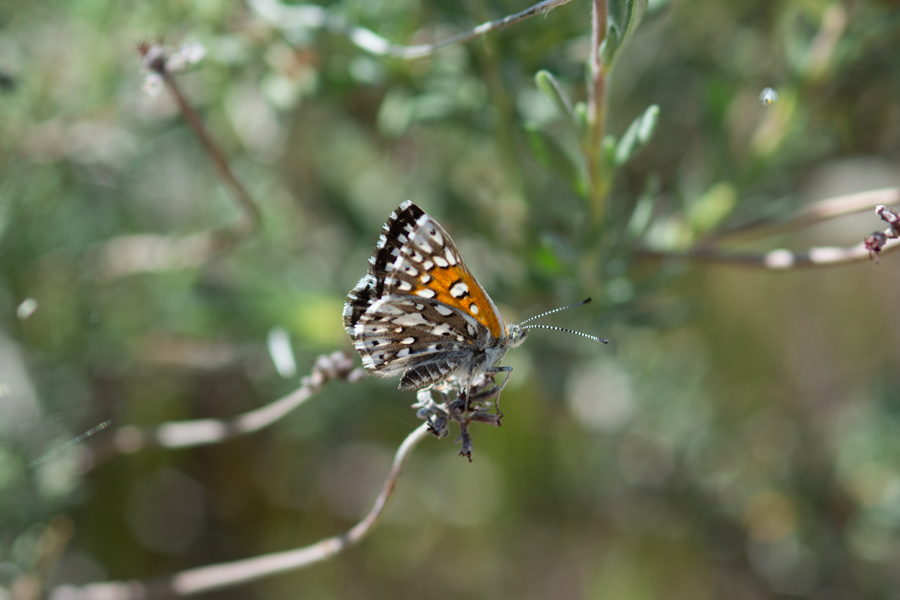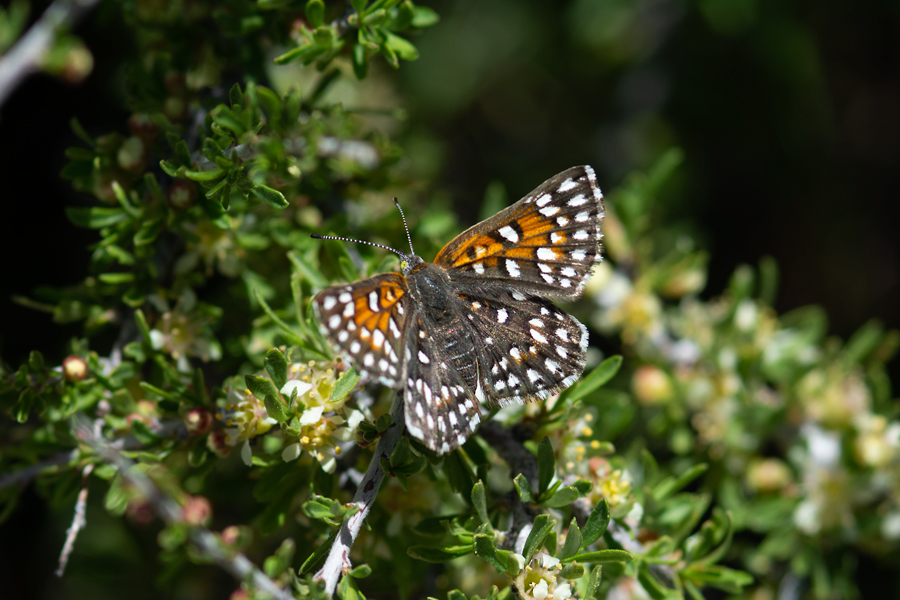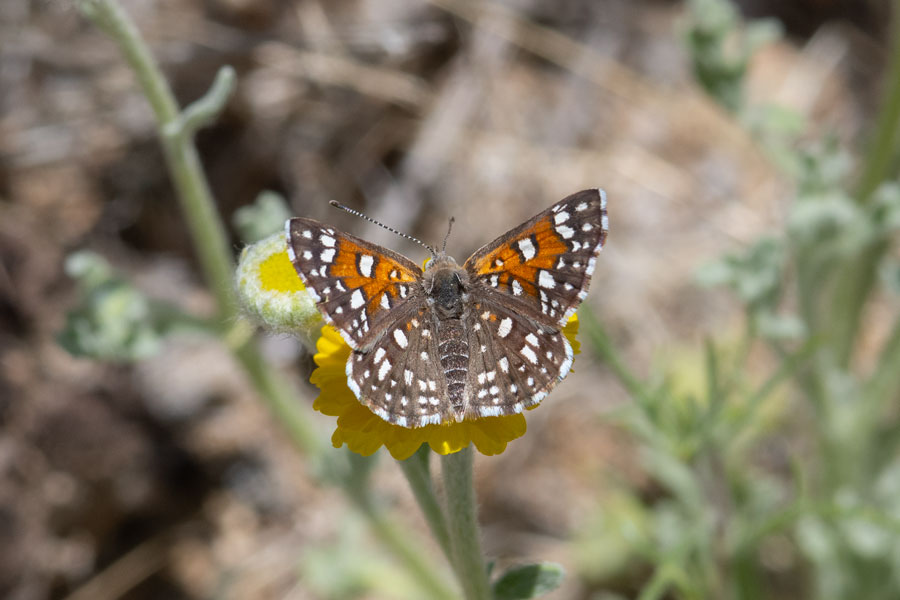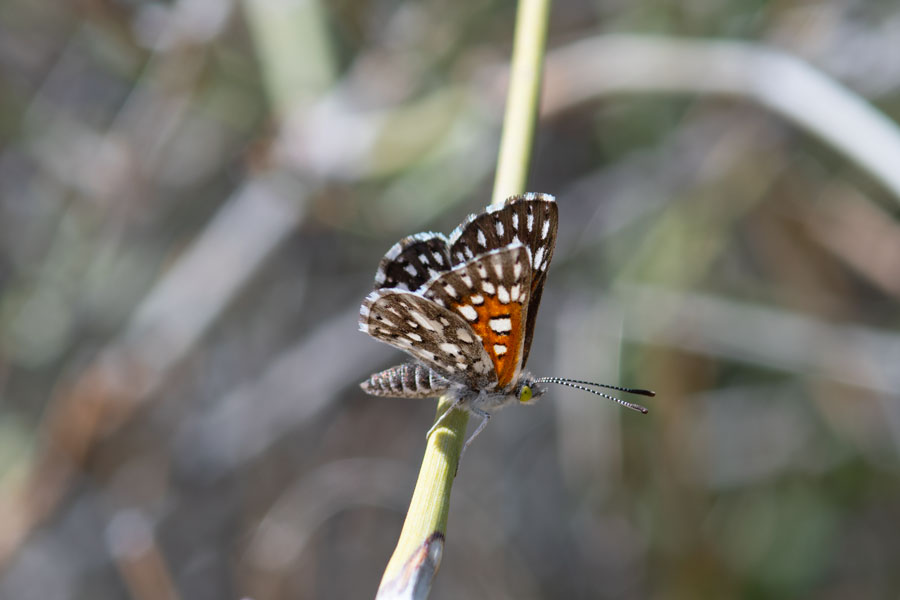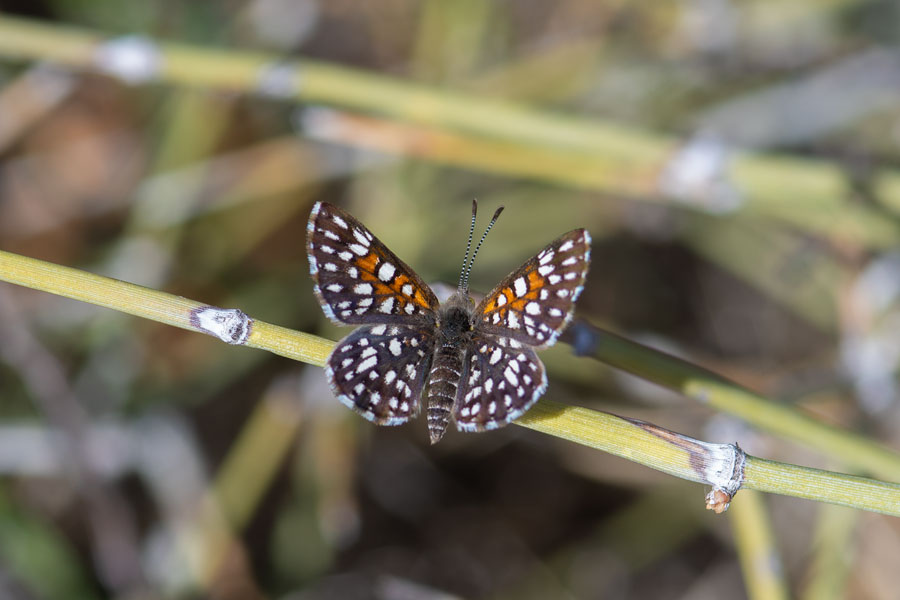Apodemia virgulti mojavelimbus
Desert Edge Metalmark
Subspecies mojavelimbus - which means "edge of the mojave" - is a dark, spring-flying butterfly found where Eriogonum fasciculatum grows along the desert edge from the north side of the San Gabriels to Joshua Tree National Park.
At the eastern end of this subspecies' range in Joshua Tree, this is a butterfly with virtually no orange scales on the hindwing. As one moves west and reaches the desert edge foothills north of the San Bernardino Mountains, many individuals have at least some orange. North of the San Gabriels, such as around Valyermo, individuals with a lot of orange fly with others that have no orange. To the north of that area in Kern County, the single-brooded, spring-flying virgulti is lighter and has orange on the hind wings. So what is happening here? It's actually simple: there is a blend zone, from the dark mojavelimbus in the southeast to the light davenporti in the northwest, and these phenotypes meet and mix almost chaotically north of the San Gabriels. But all of these populations are single brooded, fly in the spring, use California buckwheat as their larval food plant, have small eggs that hatch in about ten days, and their caterpillars have a long development time.
